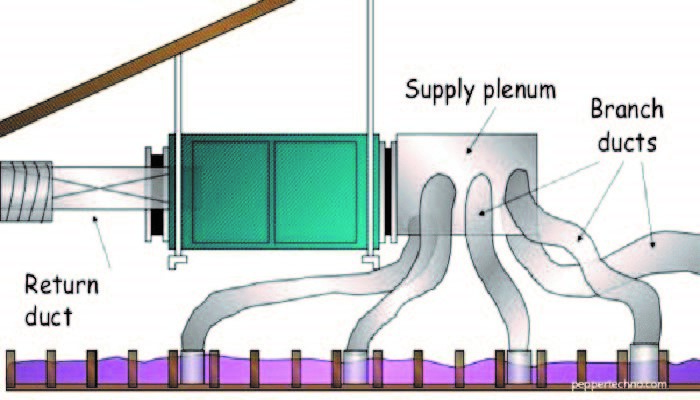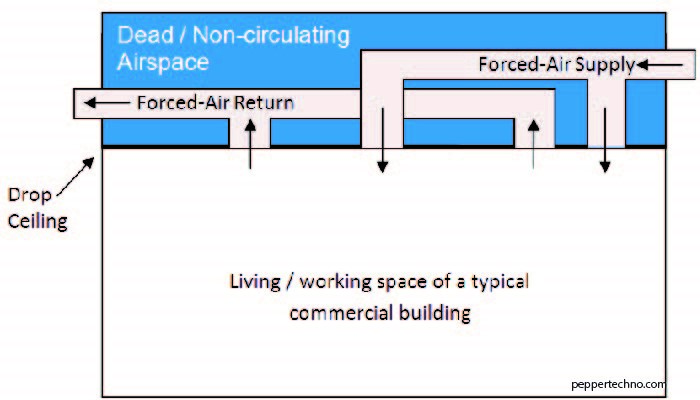What is a Plenum: Exploring the Concept of Plenum
We will explore here what is a Plenum. In various fields, the term “plenum” holds diverse meanings, ranging from architectural spaces to physics and technology. This article aims to unravel the multifaceted nature of the term, delving into its definitions, applications, and significance across different disciplines.

I. Defining Plenum: A Multifaceted Term
The term “plenum” finds its roots in Latin, where it means “full” or “filled.” However, its interpretation varies significantly across different contexts.
Architectural Plenum: Air Spaces in Buildings
In architecture, a plenum refers to the space between the structural ceiling and the suspended ceiling, often utilized for the circulation of air. This architectural concept plays a crucial role in HVAC (Heating, Ventilation, and Air Conditioning) systems, providing a pathway for conditioned air to circulate throughout a building.
Physics and Chemistry: A Gaseous State
In the realm of physics and chemistry, a plenum represents a state of matter where a space is entirely filled with matter, typically referring to a gaseous state. Understanding plenum in this context involves exploring the behavior of gases and their properties within confined spaces.
Computer Networking: Plenum Cables
In the field of technology and computer networking, plenum is associated with certain types of cables. Plenum-rated cables are designed for use in airspaces designated for air circulation, such as those found in commercial buildings. These cables meet specific safety standards to reduce the risk of fire and toxic fumes in the event of a fire.
II. Architectural Plenum: Air Circulation and Design Considerations
Architectural plenum, particularly in the context of building design, plays a crucial role in ensuring proper air circulation and maintaining environmental conditions within a structure.
HVAC Systems and Air Distribution
The architectural plenum serves as a conduit for HVAC systems, allowing conditioned air to flow efficiently throughout a building. Proper design and management of the plenum space are essential for maintaining indoor air quality and temperature control.
Considerations for Cable and Wiring Management
Beyond air circulation, the architectural plenum is also used for cable and wiring management. It provides a concealed space for electrical and networking cables, contributing to the overall aesthetics of a building by minimizing visible wiring.
III. Physics and Chemistry: Understanding the Gaseous Plenum
In the realm of physics and chemistry, the term “plenum” takes on a different meaning, representing a state of matter characterized by the complete filling of a space with gas molecules.
Properties of Gaseous Plenum
Understanding the behavior of gases in a plenum involves exploring fundamental properties such as pressure, temperature, and volume. These factors influence the dynamics of gas molecules and their interactions within the confined space.
Applications in Scientific Research
Gaseous plenum concepts find applications in scientific research, particularly in studies related to fluid dynamics, thermodynamics, and atmospheric science. Researchers utilize controlled plenum environments to conduct experiments and observe the behavior of gases under specific conditions.
IV. Technology and Networking: Plenum Cables and Safety Standards
In the realm of technology, plenum is associated with specific safety standards for cables used in commercial buildings. Plenum-rated cables are designed to meet stringent requirements to enhance fire safety and reduce the release of toxic fumes in the event of a fire.
Fire Safety Considerations
Plenum-rated cables are crucial in spaces where air circulation is necessary, as they are constructed with materials that minimize the risk of fire spread and the release of harmful substances. Understanding the importance of these safety measures is paramount in the design and maintenance of commercial buildings.
Networking Infrastructure and Reliability
In the context of computer networking, plenum-rated cables contribute to the reliability of communication systems within commercial spaces. Ensuring that these cables meet safety standards is not only a legal requirement but also a fundamental aspect of creating a secure and efficient networking infrastructure.
V. The Significance of Plenum Across Disciplines
The term “plenum” holds significant importance across various disciplines, contributing to the functionality, safety, and efficiency of systems and spaces.
Integration in Building Design
Architectural plenum integrates seamlessly into building design, offering a solution for air circulation, cable management, and overall aesthetic appeal. Architects and engineers collaborate to optimize the use of plenum spaces, creating environments that prioritize both form and function.
Safety in Commercial Spaces
In commercial buildings, the implementation of plenum-rated cables ensures the safety of occupants in the event of a fire. Compliance with safety standards not only protects lives but also safeguards valuable equipment and data infrastructure.
Advancements in Scientific Research
In scientific research, the controlled environments provided by gaseous plenums contribute to advancements in various fields. Researchers leverage plenum conditions to conduct experiments that deepen our understanding of fundamental scientific principles.
Conclusion:
The term “plenum” transcends its Latin origins, manifesting in diverse forms across architecture, physics, and technology. Whether it’s the architectural plenum facilitating air circulation, the gaseous plenum in scientific experiments, or plenum-rated cables ensuring safety in networking, this concept weaves through the fabric of multiple disciplines. Recognizing the multifaceted nature of plenum enhances our understanding of its significance and broadens our perspective on how this term shapes the design, safety, and functionality of the spaces and systems we encounter in our daily lives.



